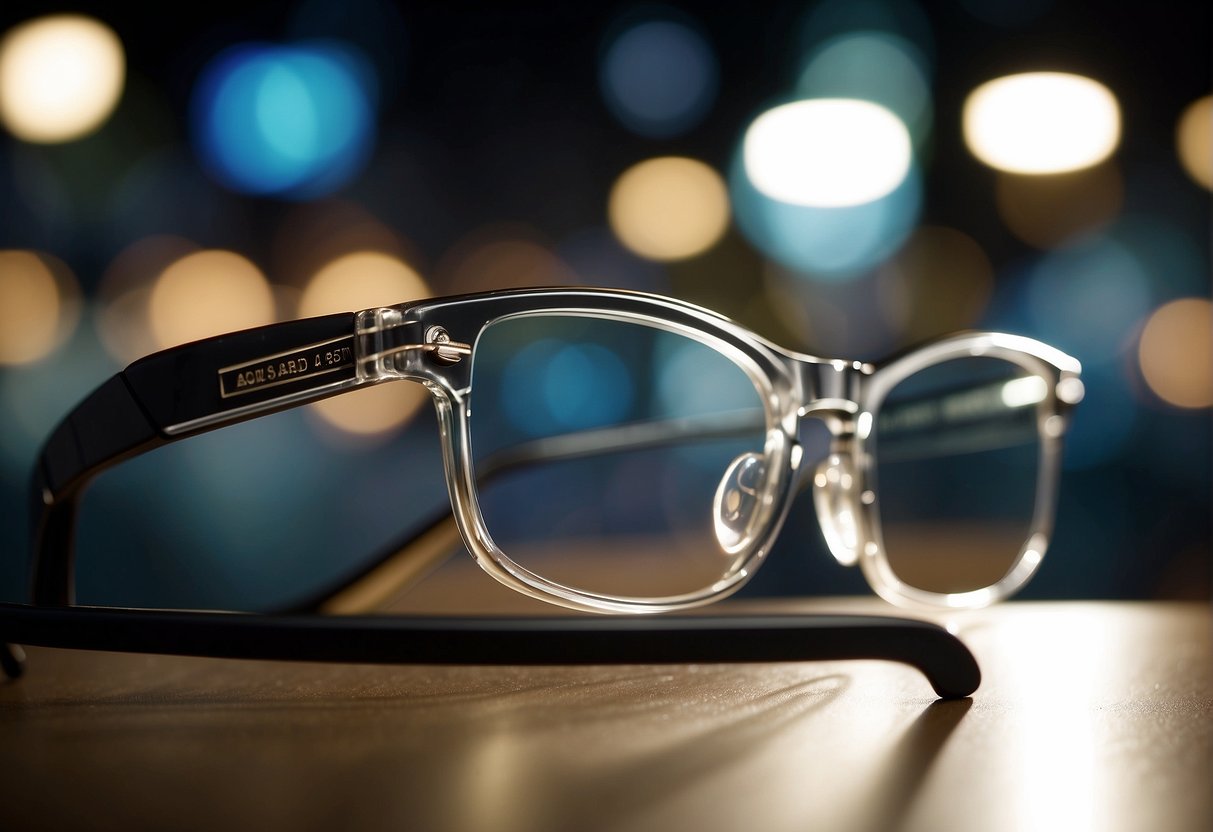Light Adjustable Lens (LAL) technology represents a significant advancement in vision correction, specifically addressing the limitations of traditional intraocular lenses used in cataract surgery.
Unlike conventional lenses, LAL allows for post-operative adjustment of lens power, which is designed to enhance visual acuity without reliance on additional eyewear.
This breakthrough comes as light-sensitive materials within the lens enable optometrists to refine a patient’s corrective prescription after the lens has been implanted.
Although the potential for tailored vision correction is appealing, the technology is accompanied by various considerations that affect its applicability and acceptance.
The cost factor cannot be overlooked, as LALs are generally more expensive than their traditional counterparts.
Additionally, the necessity of multiple post-surgical visits for lens adjustments imposes a logistical demand on patients.
Considering these factors is essential for anyone contemplating LALs as a vision correction option, as well as weighing the unique benefits it offers over standard lens implants.
Key Takeaways
- LAL technology allows post-operative adjustments to lenses, enhancing visual outcomes.
- Patients must consider the higher cost and additional visits required with LAL.
- LALs offer a customizable solution compared to traditional intraocular lenses.
Section 1: Understanding Light Adjustable Lenses
Light Adjustable Lenses (LAL) are revolutionizing vision correction by offering unprecedented post-surgical customization. This section delves into their mechanism, the innovative technology they employ, and the distinct advantages they offer over conventional intraocular lenses.
Definition and How LAL Work
A Light Adjustable Lens (LAL) is an intraocular lens (IOL) that allows for non-invasive postoperative adjustments.
Unlike traditional lenses, which have a fixed prescription determined prior to surgery, LALs can be fine-tuned to improve visual acuity based on a patient’s individual needs after cataract surgery.
The Technology Behind LAL: Materials and UV Light Adjustment Process
LALs are crafted from photosensitive silicone materials which react to ultraviolet (UV) light.
After implantation, a specialized light delivery device is used to expose the lens to UV light, which causes the lens material to alter its shape and consequently change the refractive power of the lens.
This adjustment process can be repeated until the desired visual outcome is achieved.
Key Steps in the UV Light Adjustment Process:
- Initial Calibration: Establish baseline refractive error post-surgery.
- UV Exposure: Precise application of UV light to adjust the lens.
- Stabilization Period: Waiting time for the lens to settle before the next adjustment if needed.
Key Features That Distinguish LAL From Traditional Lenses
- Customizability: LALs offer tailored visual outcomes that adapt to each patient’s specific refractive needs.
- Non-invasive Adjustments: Changes in lens power are made without additional surgery, using just UV light.
- Potential for Reduced Dependence on Glasses: Many patients achieve their optimal vision without the need for corrective eyewear post-adjustment.
Section 2: Pros of Light Adjustable Lenses
Light Adjustable Lenses (LALs) represent a significant advancement in vision correction technology. These lenses offer unique benefits that stand out in the realm of ocular implants, providing solutions tailored to individual patient needs.
Customizable Vision Correction
Light Adjustable Lenses provide a level of customization previously unavailable in standard intraocular lenses.
By allowing the surgeon to make precise adjustments to the lens power after implantation, they cater to the specific refractive errors of the patient.
Postoperative Adjustments
Patients have the option of postoperative adjustments to their LALs, which is not an option with traditional lenses.
This means they can undergo non-invasive modifications to their vision until optimal results are achieved, based on their unique visual requirements.
Reduced Need for Glasses
Due to the precision of customizability, LALs significantly lessen the likelihood of patients requiring corrective eyewear after surgery.
Many individuals achieve near-perfect vision, which reduces their dependence on glasses for daily activities.
High Precision
The technology behind LALs allows for high precision adjustments.
Final vision outcomes are typically superior when compared to standard lenses, as the lens power can be fine-tuned to a patient’s individual needs, leading to enhanced quality of vision.
Section 3: Cons of Light Adjustable Lenses

While Light Adjustable Lenses offer unique benefits, they may also present certain drawbacks that are important for prospective patients to consider.
Sensitivity to UV Light
Post-operatively, Light Adjustable Lenses require patients to avoid UV light exposure to prevent unintended changes to the lens before the final adjustment.
Patients must wear protective eyewear provided by their surgeon until the lens power is locked in.
Limited Availability
Not all surgical centers offer Light Adjustable Lenses due to the specialization required.
This can limit a patient’s access to this technology and might necessitate travel to a facility that provides this option.
Cost Considerations
The innovative nature of Light Adjustable Lenses often comes with a higher cost compared to standard lenses.
These expenses may not be covered by insurance, potentially making this option less affordable for some patients.
Not Suitable for Everyone
Light Adjustable Lenses are not a one-size-fits-all solution and may not be recommended for certain patients, such as those with a history of certain eye diseases or conditions.
A thorough evaluation by an eye care professional is essential to determine suitability.
Section 4: Real-World Application and Patient Experiences
In examining the impact of Light Adjustable Lens (LAL), patient testimonials and the professional observations of ophthalmologists provide valuable insights into its real-world application.
Case Studies and Patient Testimonials
Patients who have undergone cataract surgery with LAL often report high satisfaction rates.
For instance, in one case study, a patient named John, who had high myopia, experienced an improvement in vision acuity to nearly 20/20 after fine-tuning his LAL post-surgery.
Additionally, patient forums and testimonials consistently highlight the LAL’s ability to effectively tailor visual outcomes that cater to each patient’s lifestyle needs.
Patient Feedback:
- “After adjustment, my vision is clearer than it’s been in years.”
- “The process took a few weeks longer, but being able to fine-tune my sight was worth it.”
Professional Insights From Ophthalmologists
Ophthalmologists report a significant increase in precision with LAL compared to traditional lenses.
Dr. Maloney, an eye specialist, notes that 92% of patients fitted with LAL achieve vision within 0.5 diopters of their target outcome.
Ophthalmologist Observations:
- High accuracy in achieving desired refractive outcomes post-surgery.
- Better control in correcting astigmatism with LAL than with standard lenses.
Section 5: Comparing LAL with Other Vision Correction Methods

This section addresses how Light Adjustable Lens (LAL) technology measures up against alternative vision correction methods, specifically outlining details in advanced lens options and key factors influencing the choice of LAL over others.
Comparative Analysis of LAL with Other Advanced Lens Technologies
The LAL offers a unique feature not present in other intraocular lenses: the capability for postoperative adjustments.
Patients can have their vision fine-tuned after surgery, which can lead to more precise visual outcomes.
- Monofocal Lenses: Traditional monofocal lenses do not provide the same customization; they typically correct vision for one fixed distance.
- Adjustability: LAL can be fine-tuned, whereas monofocals cannot.
- Multifocal Lenses: Multifocals improve vision at multiple distances, but they may cause issues such as glare and halos.
- Visual Acuity: Some patients achieve sharper visual acuity with an LAL due to its customizability post-surgery.
Considerations for Choosing Between LAL and Other Options
Selecting LAL involves assessing a patient’s specific needs and the potential benefits over alternative lenses.
- Patient Lifestyle: Visual demands related to a patient’s work and hobbies play a critical role in lens selection.
- Post-Surgery Adjustments: LAL’s ability for postoperative tweaking might appeal to patients desiring precise visual outcomes.
- Cost: LAL might have a higher cost compared to other lenses, which could be a determining factor.
Conclusion

The advent of Light Adjustable Lens (LAL) brings significant advancements in vision correction, particularly after cataract surgery.
These lenses provide patients with the unique ability to customize their vision post-operatively, which has been shown to enhance visual outcomes.
Pros of LAL:
- Precision: The customization process allows for adjustments to be made until optimal vision is achieved.
- Reduced Dependence: Patients may experience a decreased need for glasses or contact lenses.
- Patient Comfort: Adjustments are made non-invasively, contributing to patient comfort during the correction process.
Cons of LAL:
- Sensitivity: The lenses require protection from UV light post-surgery, necessitating the use of special glasses.
- Surgery Duration: The total process, including adjustments, can extend the overall treatment timeline.
- Risk Factors: There are inherent risks, such as potential misalignment and infection, as with any surgical procedure.
In evaluating Light Adjustable Lens technology, one must weigh these considerations carefully.
While LALs offer an impressive degree of customization and the promise of enhanced visual acuity, patients must be prepared for the additional requirements and potential risks associated with the technology.
It is essential that both practitioners and patients are well-informed about the nuances of using LALs to ensure the best possible outcomes.
Frequently Asked Questions
This section addresses common inquiries regarding Light Adjustable Lenses, providing clear and concise information to those considering the technology for vision correction.
What are the potential complications associated with Light Adjustable Lenses?
Patients should be aware that, like any medical procedure, there are potential complications with Light Adjustable Lenses. These include longer surgery time, extended recovery periods, and the need for multiple post-operative adjustments.
How do patients typically review their experience with Light Adjustable Lenses?
Individual reviews often highlight satisfaction due to high precision in vision correction. Many patients achieve close to their target prescription. Some reviews may mention the inconvenience of multiple follow-up visits for adjustments.
What is the estimated longevity of a Light Adjustable Lens?
Light Adjustable Lenses are designed to be a long-term solution for vision correction. They have the potential to last for the lifetime of the patient, barring any significant changes in the eye unrelated to the lens itself.
How much can one expect to invest in a Light Adjustable Lens procedure?
The cost for a Light Adjustable Lens procedure can vary widely. But it typically comes at a premium compared to standard lenses, reflecting the advanced technology and potential for customized vision correction.
At what point is the prescription of a Light Adjustable Lens considered permanent?
The prescription of a Light Adjustable Lens is considered permanent after the final light treatment is applied. This typically occurs weeks after the surgical procedure once the patient and surgeon are satisfied with the vision correction achieved.
How does a Light Adjustable Lens perform in providing clear near vision?
The performance of Light Adjustable Lenses in providing clear near vision depends on the customization during the adjustment phase. This may enhance both near and distance vision according to patient needs and lifestyle considerations.



